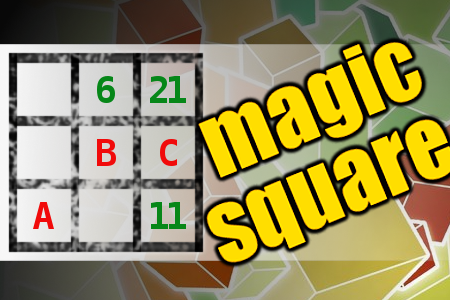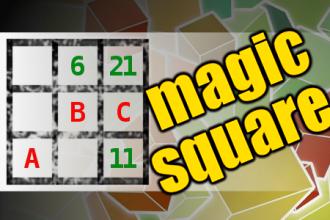MAGIC SQUARE: Calculate A-B+C
The aim is to place the some numbers from the list (6, 9, 11, 18, 21, 23, 64, 67, 69, 72, 97) into the empty squares and squares marked with A, B an C. Sum of each row and column should be equal. All the numbers of the magic square must be different. Find values for A, B, and C. Solution is A-B+C.
This one never gets old - The New CEO
A company, feeling it was time for a shakeup, hired a new CEO.
The new boss was determined to rid the company of all slackers.
On a tour of the facilities, the CEO noticed a guy leaning against a wall and idly picking his teeth.
The room was full of workers and he wanted to let them know that he meant business.
He asked the guy, “How much money do you make a week?”
A little surprised, the young man looked at him and said, “I make $400 a week. Why?”
The CEO said,”Wait right here.”
He walked back to his office, came back in two minutes, and handed the guy $1,600 in cash and said, “Here’s four weeks’ pay.
Now GET OUT and don’t come back.”
Feeling pretty good about himself the CEO looked around the room and asked,
“Does anyone want to tell me what that goof-ball did here?”
From across the room a voice said,
“Sure – he was the Pizza delivery guy from Domino’s and was just waiting to collect the money!”

